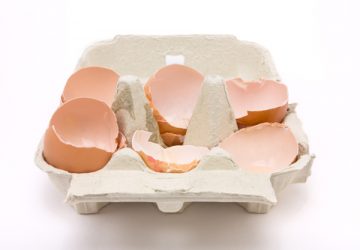For years a broad coalition of food fanatics has warned Americans about an impending mad cow disease “epidemic.” Their doom-and-gloom scenarios, of course, haven’t come to pass — and public interest has understandably fizzled. Yet the mad-cow hype is just too perfect a public fear campaign for some activists to relinquish. Some groups, like the Organic Consumers Association, continue to use it as a centerpiece of their agendas. The common thread running through activist mad-cow campaigns is that “corporations” (defined as those who raise more than ten head of cattle and haven’t gone “organic”) are the mad-cow culprits. (See here, here, and here for examples.) But at a meeting in London last month, scientists heard about an “atypical” strain of the disease, found in two U.S. cows — a discovery that indicates some mad-cow cases could arise out of thin air. As the Associated Press asked on Sunday, “Can Mad Cow Appear Spontaneously?”
Despite the continuing drumbeat of activist fear, these mad-cow cases may not, in fact, be evidence that government safeguards have failed us. Rather, they could merely indicate our improved technological ability to diagnose biological anomalies that have always been there. Professor Colin Masters from Melbourne University puts this point best: “So far [mad cow cases] are very rare and they’ve only been found because of this massively increased surveillance.”
Anti-consumer activist
John Stauber ushered in the mad-cow scare in the late 1990s with a reckless book hinting at a beef-based Holocaust to come. This morning Stauber is also taking credit for “predicting” this atypical mad-cow strain, while conveniently ignoring the possibility that Mother Nature — not infected cattle feed — might cause it.
A scientific investigation into the two cases of mad cow in American-born cattle tells a very different story. Researchers are now informing the public that the “two cases of mad cow disease in Texas and Alabama seem to have resulted from a mysterious strain that could appear spontaneously in cattle.” [emphasis added]
Medical experts tell us that garden-variety Creutzfeldt-Jakob Disease (CJD), a progressive neurological disorder found in humans, occurs randomly in about one out of a million people each year. If the science emerging from London is on-target, mad cow disease (which is in the same class of diseases as CJD) behaves in a similar fashion. So whether a calf is raised on an organic farm, fed only exotic grasses, or finished in a conventional feedlot, it may have a roughly equal (yet infinitesimally small) risk of developing the disease.




